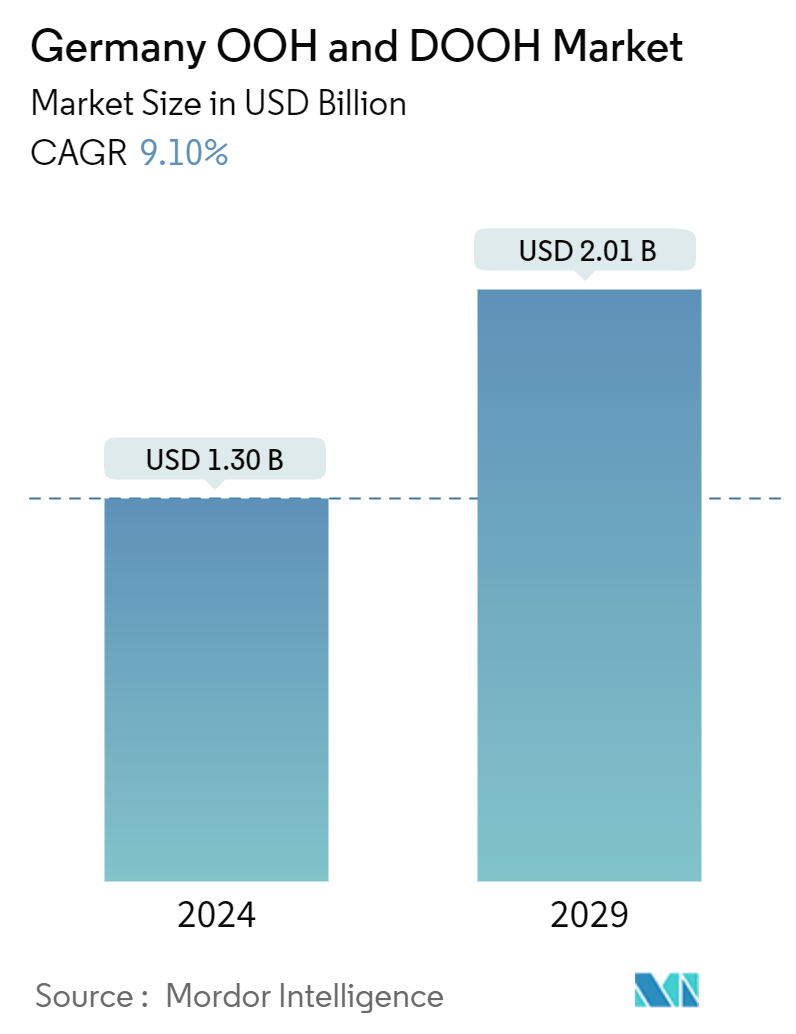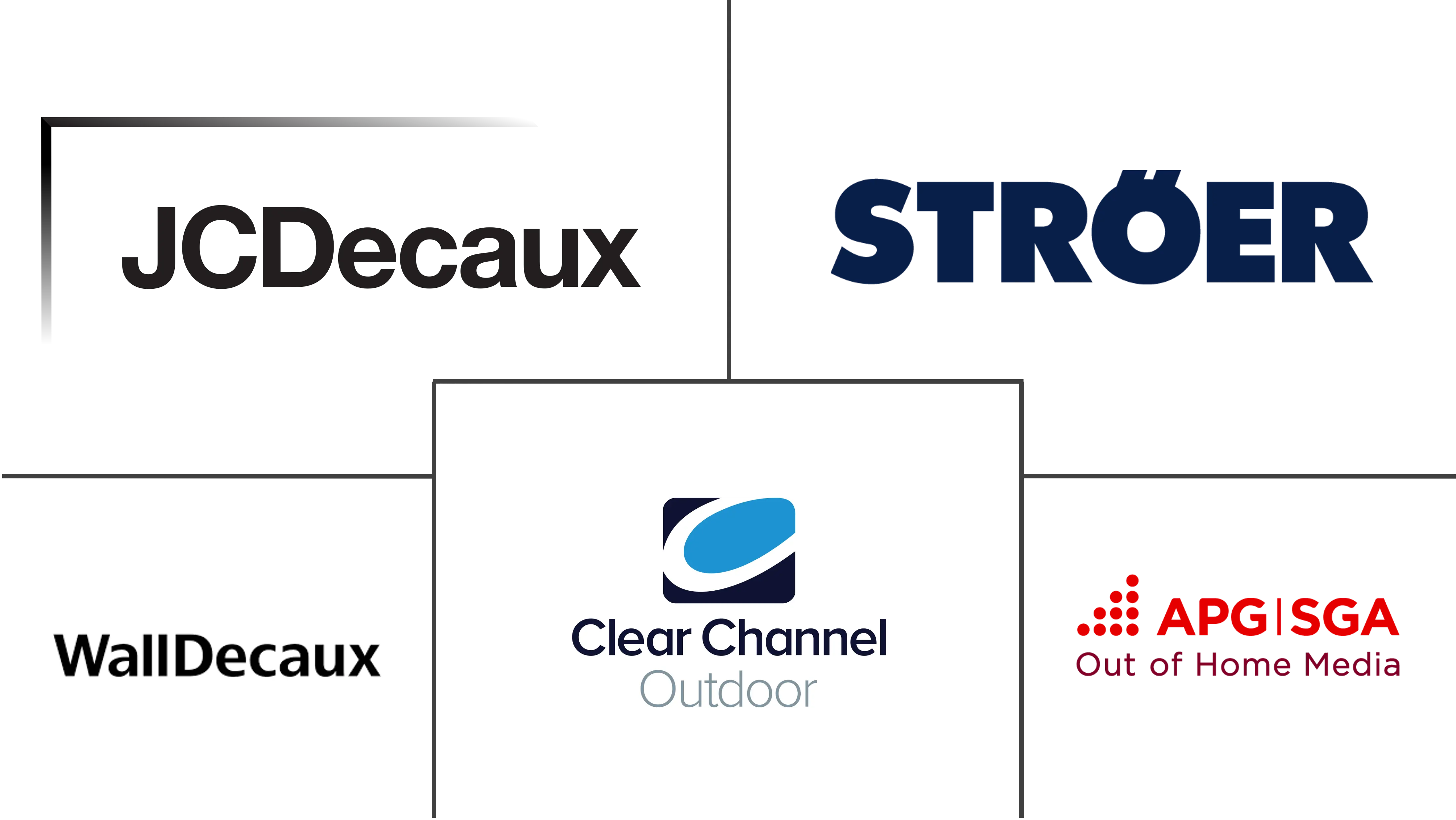Market Size of Germany OOH And DOOH Industry

| Study Period | 2019 - 2029 |
| Base Year For Estimation | 2023 |
| Market Size (2024) | USD 1.30 Billion |
| Market Size (2029) | USD 2.01 Billion |
| CAGR (2024 - 2029) | 9.10 % |
| Market Concentration | Medium |
Major Players
*Disclaimer: Major Players sorted in no particular order |
Need a report that reflects how COVID-19 has impacted this market and its growth?
Germany OOH And DOOH Market Analysis
The Germany OOH And DOOH Market size is estimated at USD 1.30 billion in 2024, and is expected to reach USD 2.01 billion by 2029, growing at a CAGR of 9.10% during the forecast period (2024-2029).
The Out-of-Home (OOH) and Digital Out-of-Home (DOOH) advertising market in Germany is dynamic, marked by notable digital advertising advancements and a wide array of advertising solutions. It encompasses traditional billboards, street furniture, transit advertising, and a growing presence of digital displays.
• Germany's robust public transit system, encompassing subways, buses, and trains, presents a fertile ground for OOH and DOOH advertising. With high urbanization rates and dense population hubs, these transit channels offer unparalleled access to a vast and varied audience.
• The alliance of Germany's high urbanization rates and expansive public transit systems amplifies the efficacy of OOH and DOOH advertising. Advertisers leverage these dynamics to engage with a diverse audience, magnifying the impact of their campaigns.
• The surge in digital screen adoption and the embrace of programmatic advertising solutions stand out as pivotal growth catalysts. These advancements usher in a new era of advertising, empowering real-time updates and personalized content delivery.
• Germany's robust economic landscape underpins its attractiveness for advertising investments. Cognizant of OOH and DOOH's prowess in consumer outreach, businesses are channeling significant budgets into these mediums.
• However, a key hurdle for the German OOH and DOOH landscape lies in the substantial costs of setting up and maintaining digital advertising infrastructure. These expenses encompass technology upgrades, energy consumption, and the routine upkeep of digital displays.
